Every summer we are blessed with an amazing lupine display along our roadsides and highways here in Nova Scotia. In this post we will discuss how to grow lupines so that you can bring that beautiful look of wild lupines into your garden.
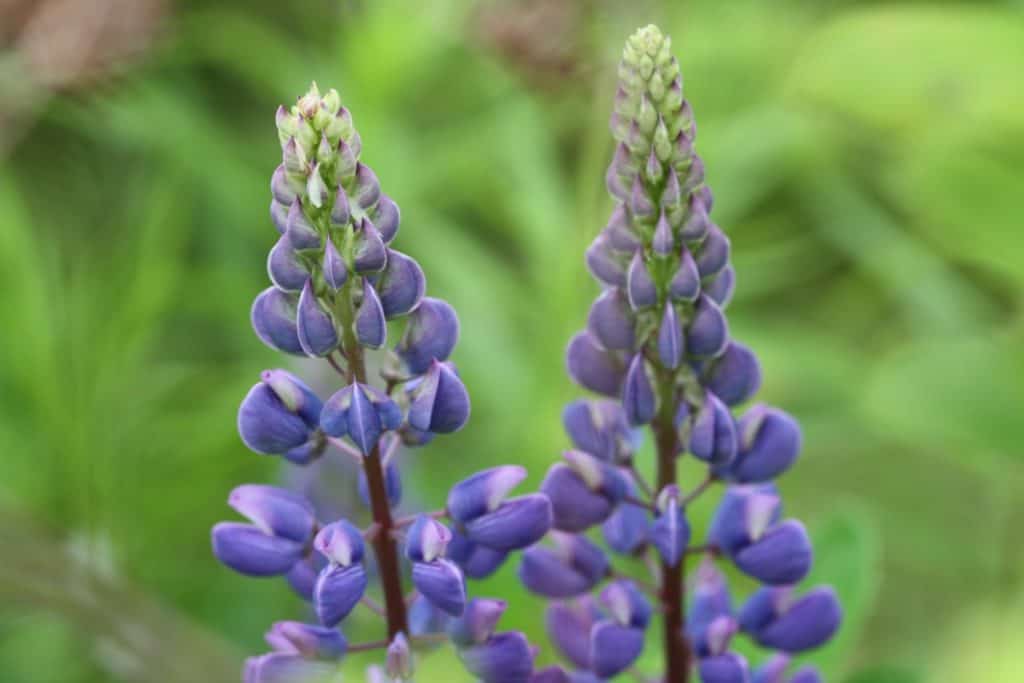
How To Grow Lupines
Lupines are herbaceous perennial plants with long taproots. They are not easily transplanted, and are best grown from seed. As with many other perennial plants, seeds will need to be stratified or scarified prior to planting for successful germination.
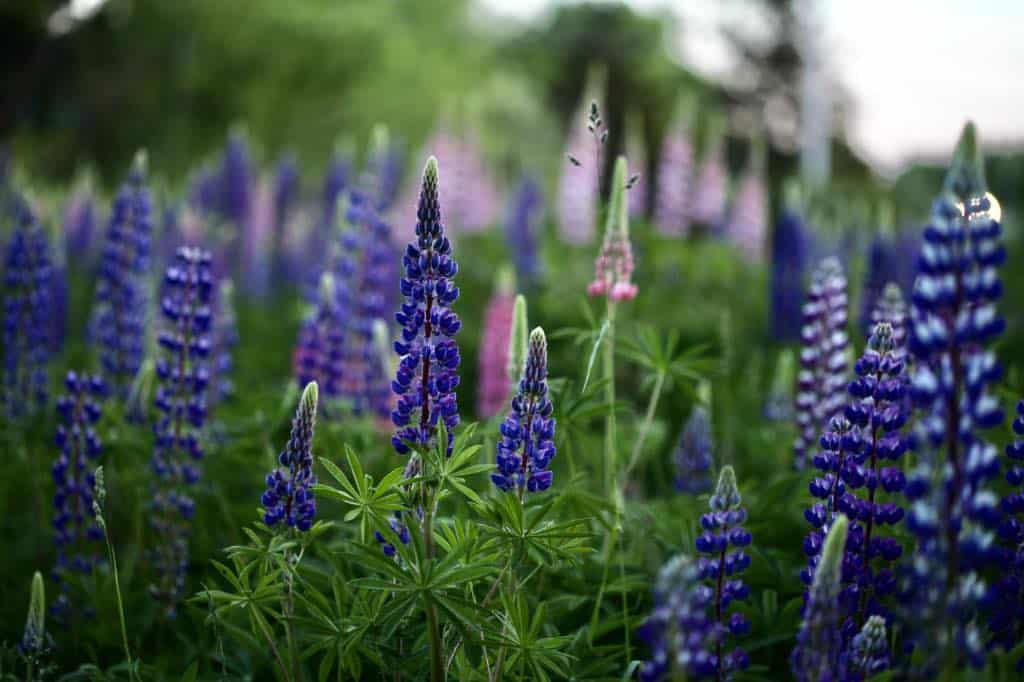
What Are Lupines?
Lupines are a member of the pea family, or Family Fabaceae, and the Genus Lupinus.
There are 199 species of lupines within the Lupinus genus, and although some are annuals, most are herbaceous perennial plants.
Lupines grow in North America, as well as South America. They are also found in Northern Africa and the Mediterranean.
Perennial lupines grow wild here in Nova Scotia, and every year in late spring, we wait for their beautiful display. These plants are not native to the province, and were introduced in the 18th and 19th centuries.
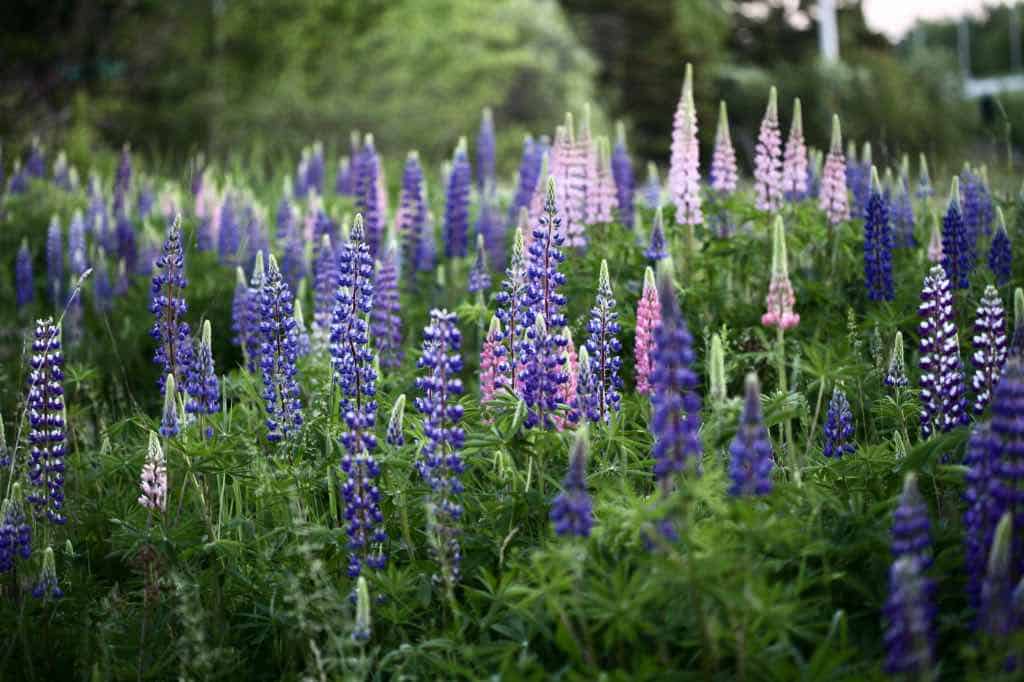
The two types of perennial lupines growing in Nova Scotia include Lupinus polyphyllus and Lupinus nootkatensis
Although considered a wild flower, these plants also make great plantings for the spring garden, providing lots of color to enjoy every year.
Besides the wild lupines, there are also many other lupine cultivars available for planting in the garden, such as the Russell hybrids.
Lupines are also important plants for the pollinators, and especially the bees. It's fun to watch the bees dance around the lupine flowers in the garden.
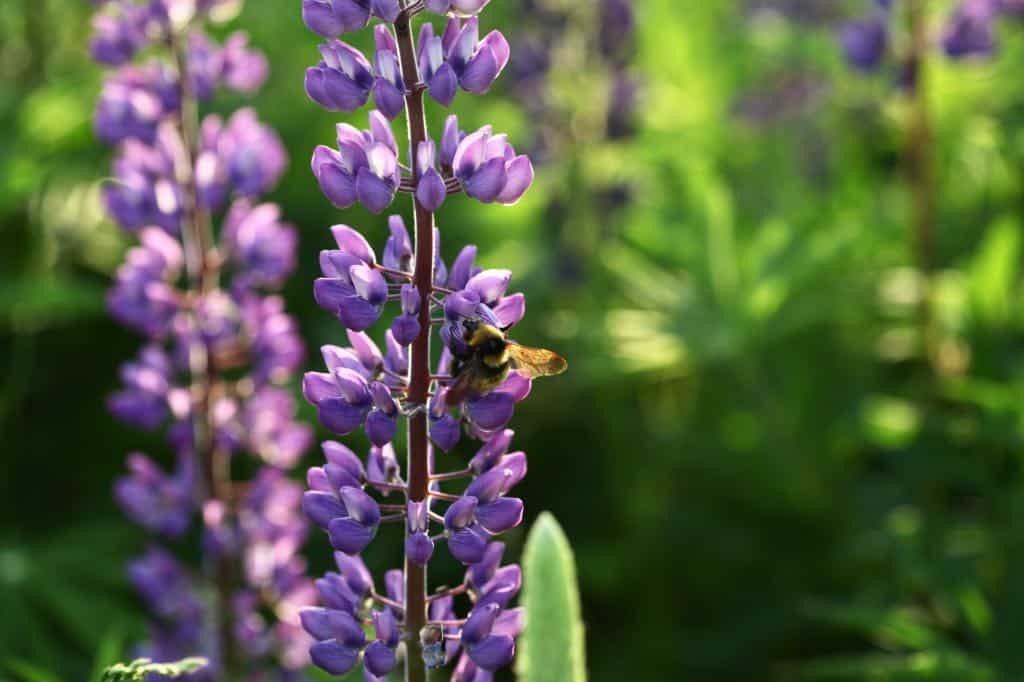
The Flowers
- Lupine blooms consist of colorful spikes of many pea-like blossoms, which are arranged at the tops of the flower stems. The blossoms measure approximately 1 to 2 cm in length.
- The small flowers within the spiked blooms have the appearance of bonnets, lending to common names such as Bluebonnets and Quaker Bonnets.
- Lupine flower color ranges from creams and yellows, to reds, pinks, purples, and blues.
- Often the flowers are multicolored.
- Flower stalks are usually 3 to 4 feet in height in mature plants.
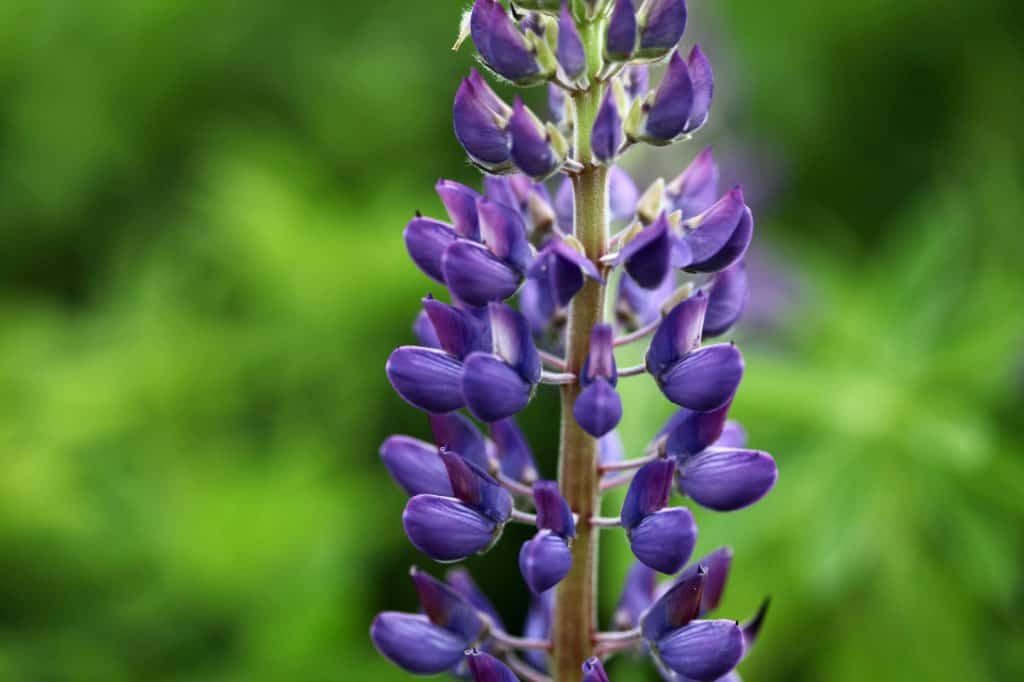
The Leaves
- Lupine leaves are palmate, or palm shaped, and generally have numerous lobes.
- The leaves are covered in fine silvery hairs, and are grey-green in color.
- Lupine leaves are at risk to powdery mildew in humid locations.
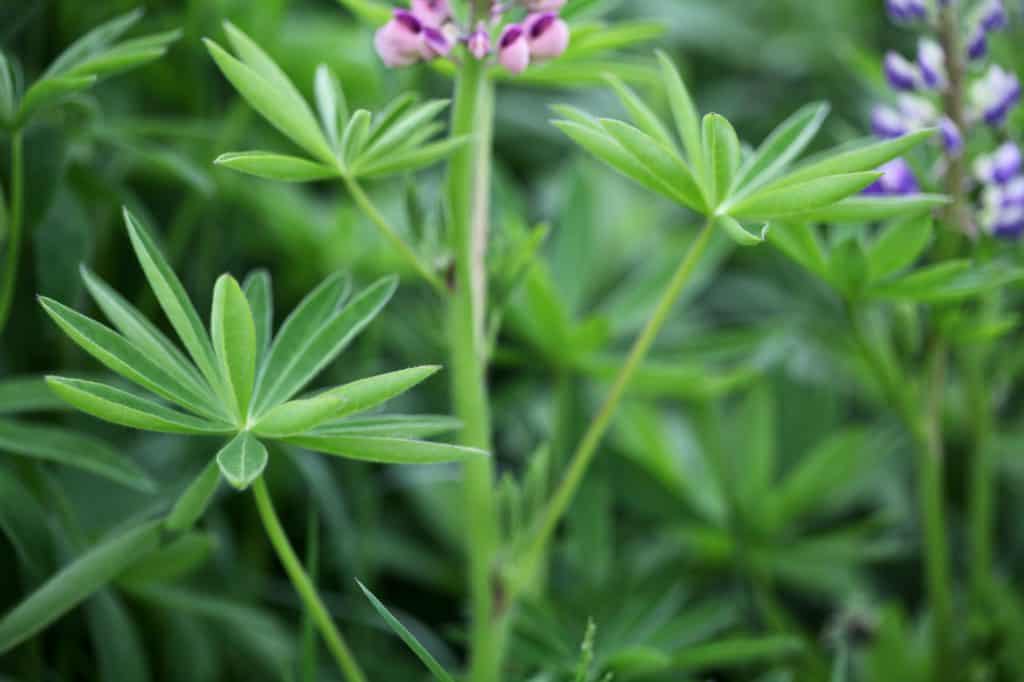
The Seeds
- The seeds of the lupine plant are contained within an elongated pod which is grey colored at maturity, and covered with hairs.
- Lupine seeds are round and shiny, and measure approximately 0.25 cm in diameter.
- The seeds are brown in color, with a mottled or speckled look.
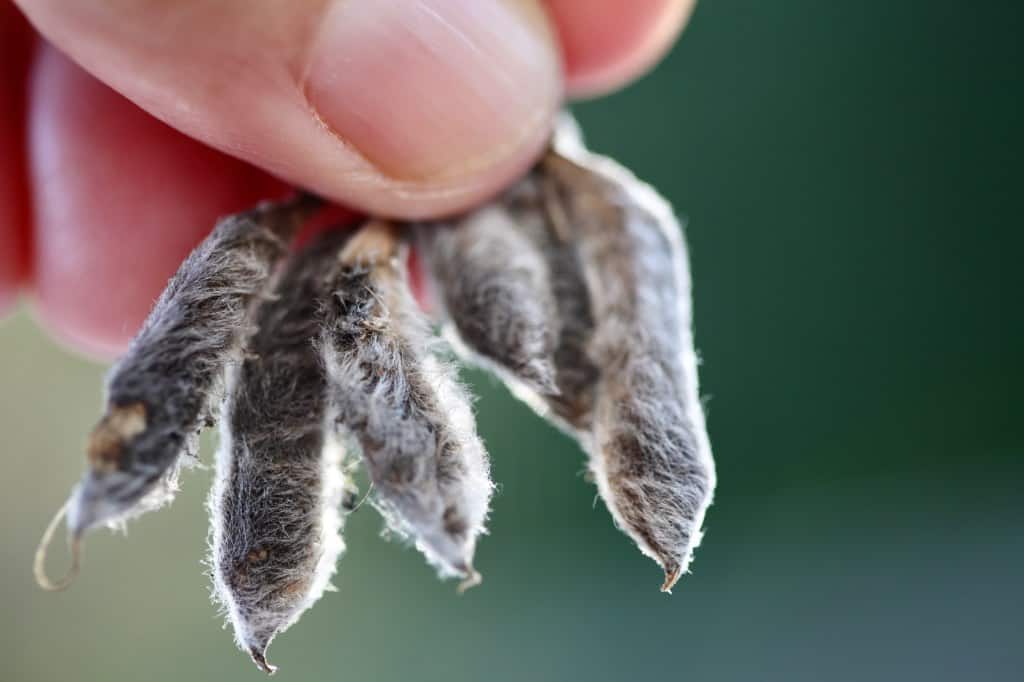
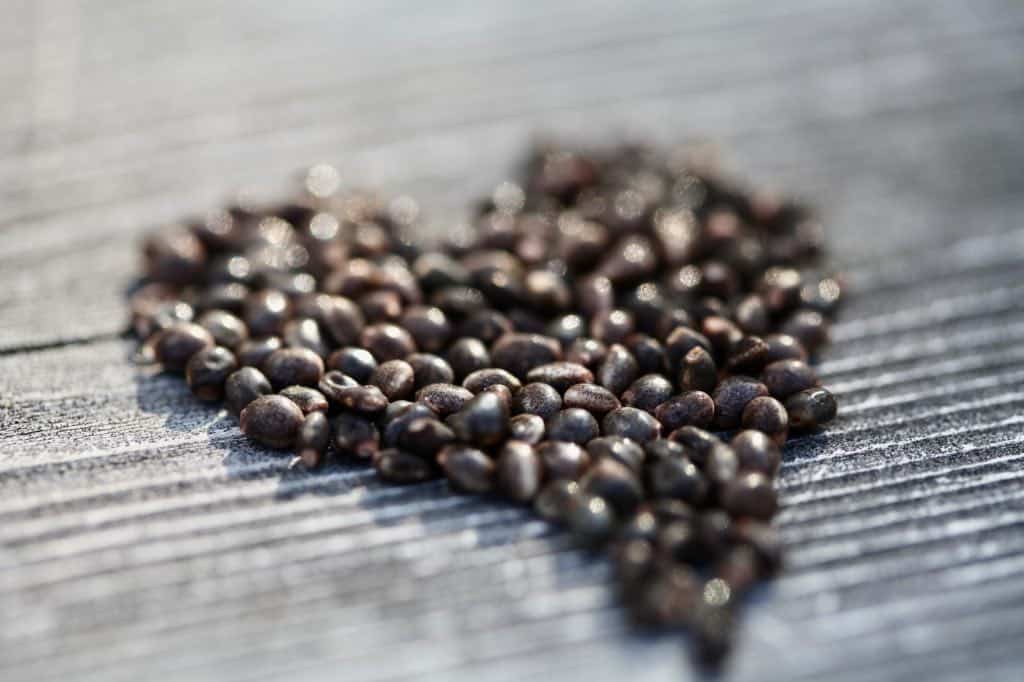
The Roots
- When established, the lupine plant has a long tap root which grows deep into the ground.
- This root is evident on young seedlings, and should not be injured when transplanting the plants into the garden.
Growing Lupine From Seed
- Starting lupine from seed is the easiest way to grow new plants.
- Lupines are easy to grow from seed, as long as the seeds receive the proper preparation beforehand.
- Lupine seeds will require a period of stratification prior to germination.
- You can start your seeds inside in winter, winter sow the lupine seeds, or plant them in the garden in the fall.
- Direct sowing of lupine seeds into your garden in the fall allows the seeds to naturally go through the process of stratification, which prepares the seeds for germination.
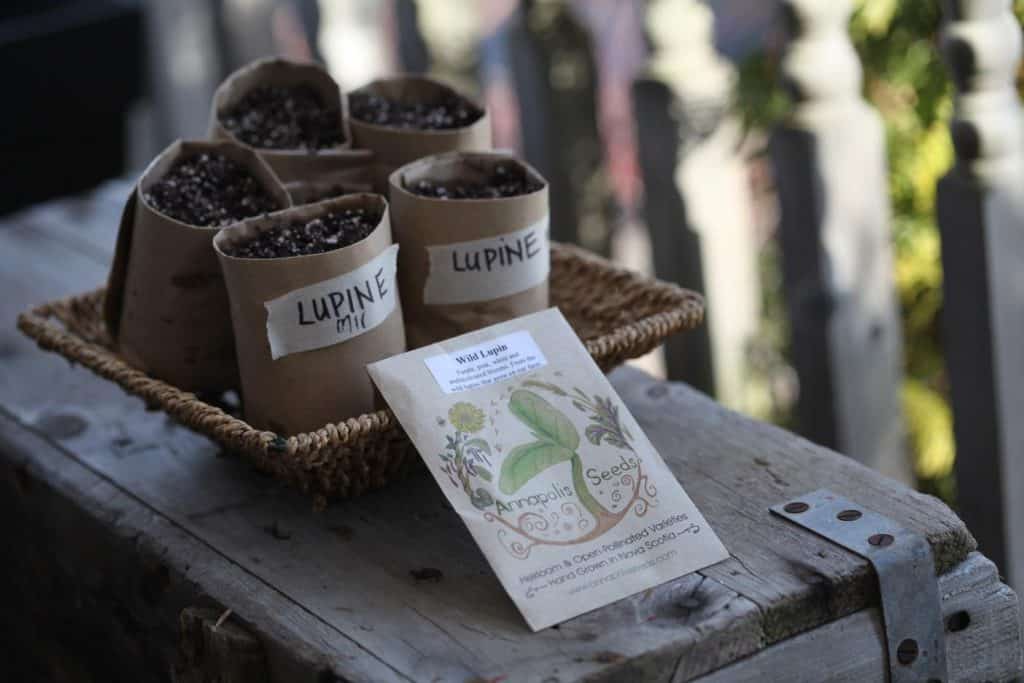
What is Stratification and Scarification?
Stratification
Stratification is the process by which the hard seed coat of a cold hardy plant is exposed to a period of cold temperatures and moisture. This causes the seed to soften and prepares it for germination.
The stratification process can occur:
- naturally as a seed lies dormant in the soil outside and is exposed to the cold temperatures and wet weather in the natural landscape.
- or by placing the seed into the fridge in a bag with a moist medium, such as vermiculite or moistened paper towel.
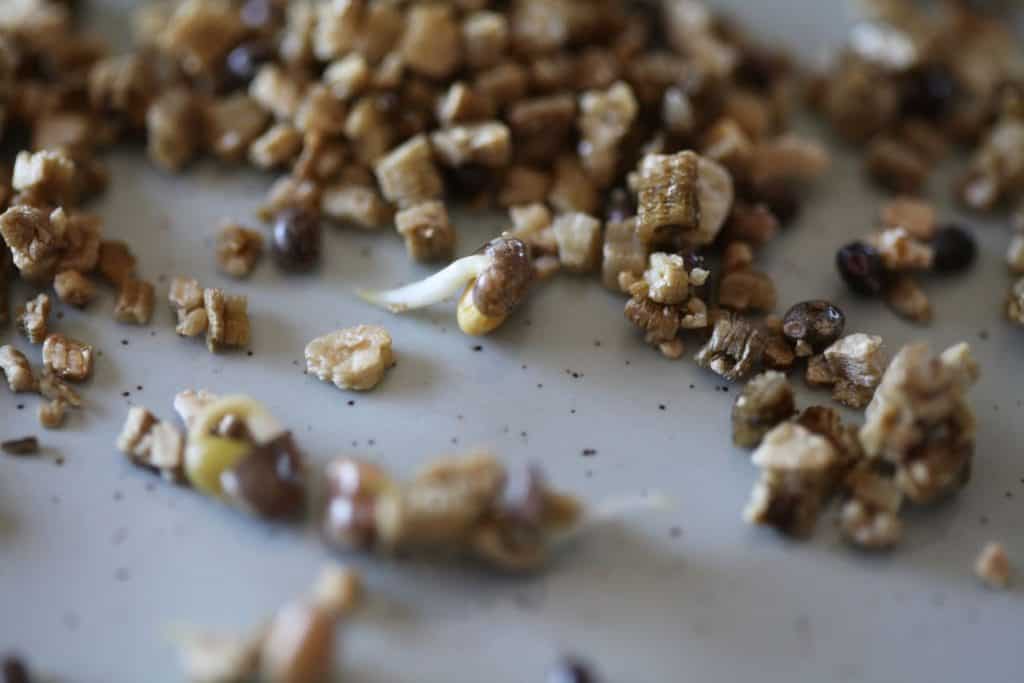
Scarification
Scarification is the process by which the hard seed coat of a cold hardy plant is mechanically altered to allow germination to occur.
The scarification process can be achieved by:
- rubbing the seed coat with a coarse material such as sandpaper, thinning out the surface.
- nicking the seed coat with a sharp object such as a knife, taking care not to injure the soft inner parts of the seed.
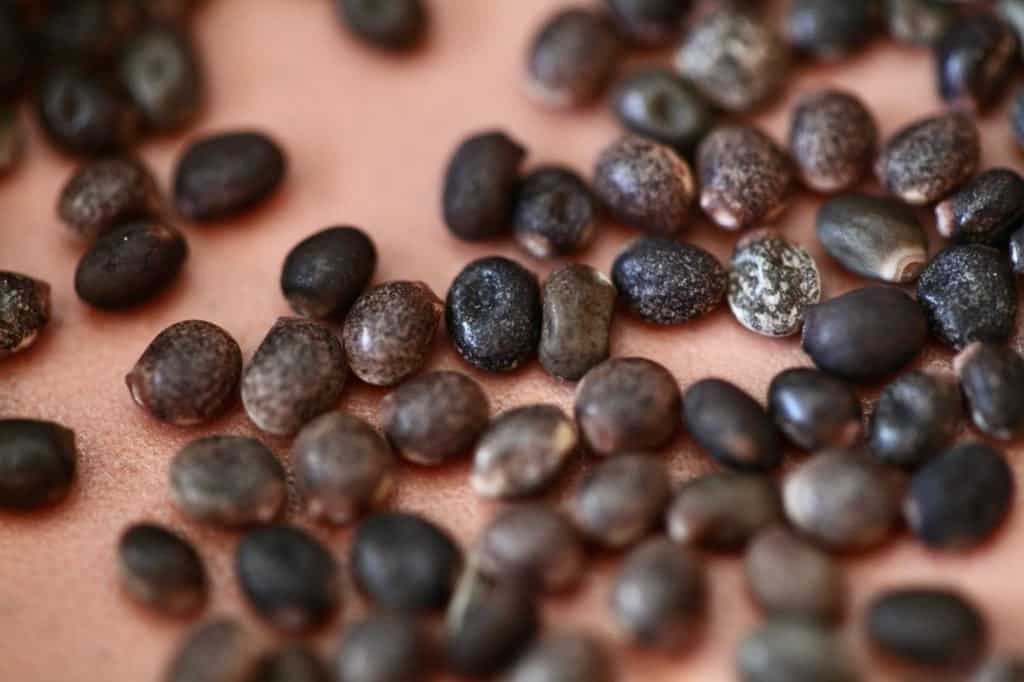
Growing Lupine From Cuttings
- Lupines can also be propagated by basal cell cuttings.
- If grown by cuttings you are sure to get the colour of lupines that you are wanting, as they will be the same as the mother plant.
- Basal cuttings should be taken in mid spring from sturdy shoots of lupine plants.
- Make sure to take a piece of the basal cell along with the shoot.
- Trim off the lower leaves and dip into rooting hormone.
- Place in a soilless mix and keep moist until rooted.
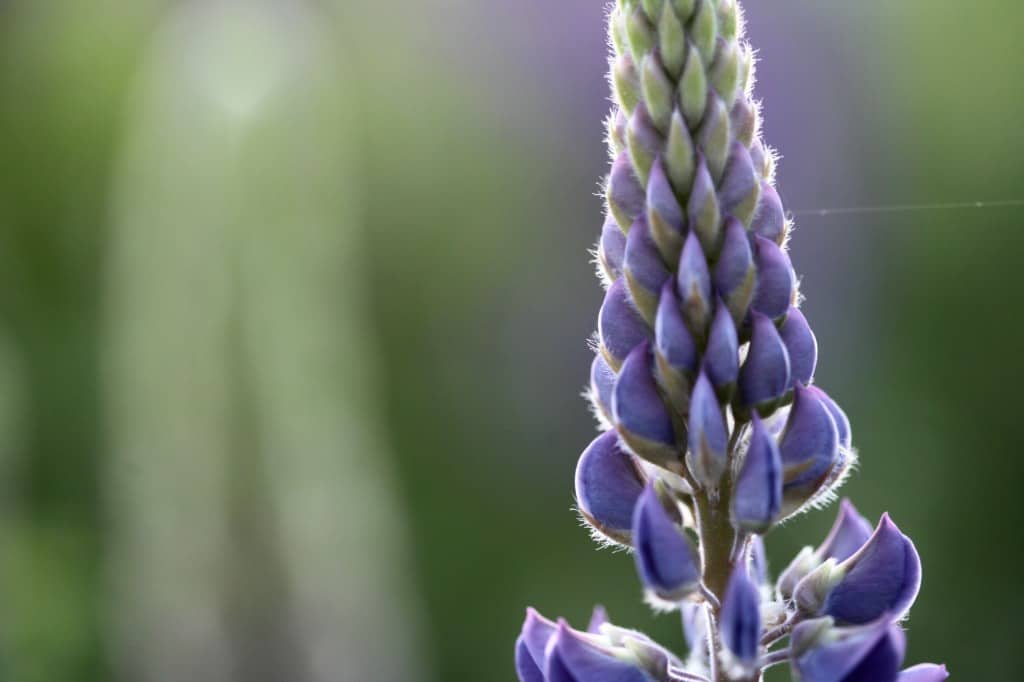
Transplanting Lupine
- Transplanting lupines can be done, although they do not easily tolerate this process.
- Lupines have a long taproot which is very vulnerable during the transplantation process.
- If the taproot is injured during transplanting the plant may not survive.
- Sometimes however, plants have to be moved. If you absolutely have to move a lupine to a new location, you can try to transplant it.
- The best time to transplant lupines is in early spring, when the roots are still small and just getting established for the season.
- Move the plant to a new location with average soil and good drainage. Water well, and keep your fingers crossed!
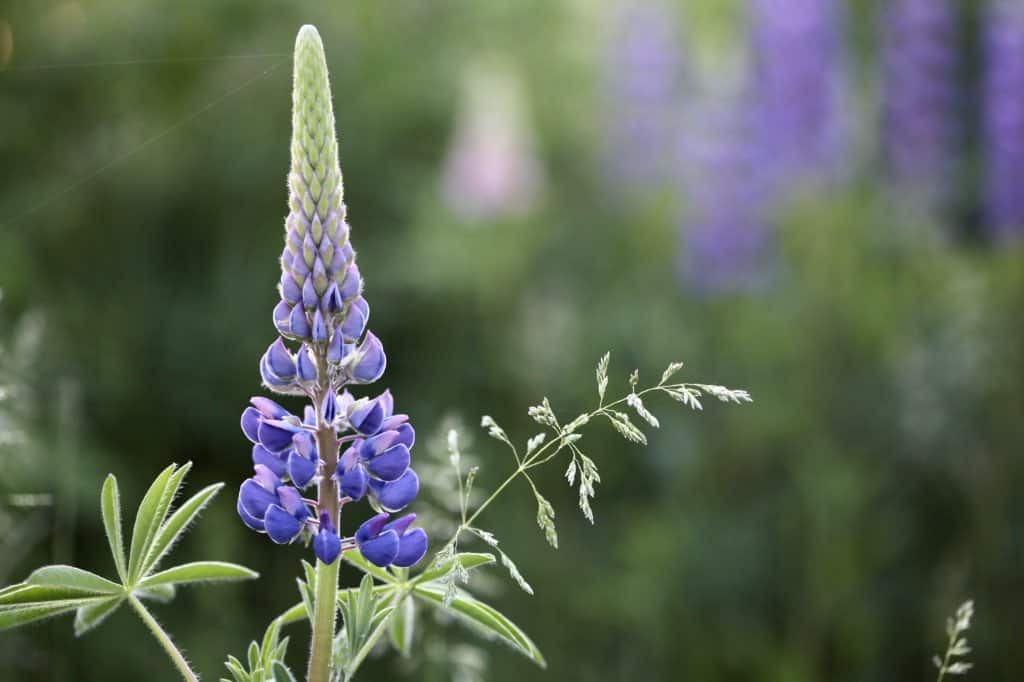
How To Grow Lupines From Seed
- Lupines are perennials with a thick seed coat. Like with many other perennial seeds, this thick coat offers protection to the seed during the cold wet winter.
- The purpose of the coat is to keep the seed from germinating until the spring.
- So if you have planted your seeds outside in the garden in fall, you just have to wait for the weather to warm up.
- If you are planting your seeds inside, they will need to be stratified or scarified.
- You can also winter sow your lupine seeds using the winter sowing method in milk jugs which will naturally stratify the seeds.
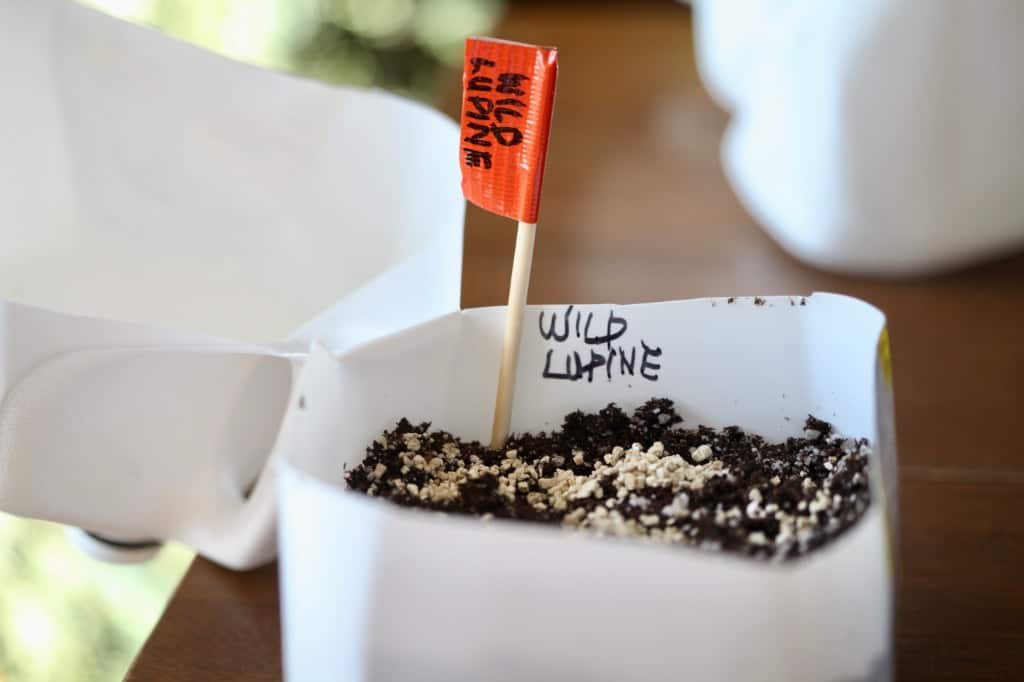
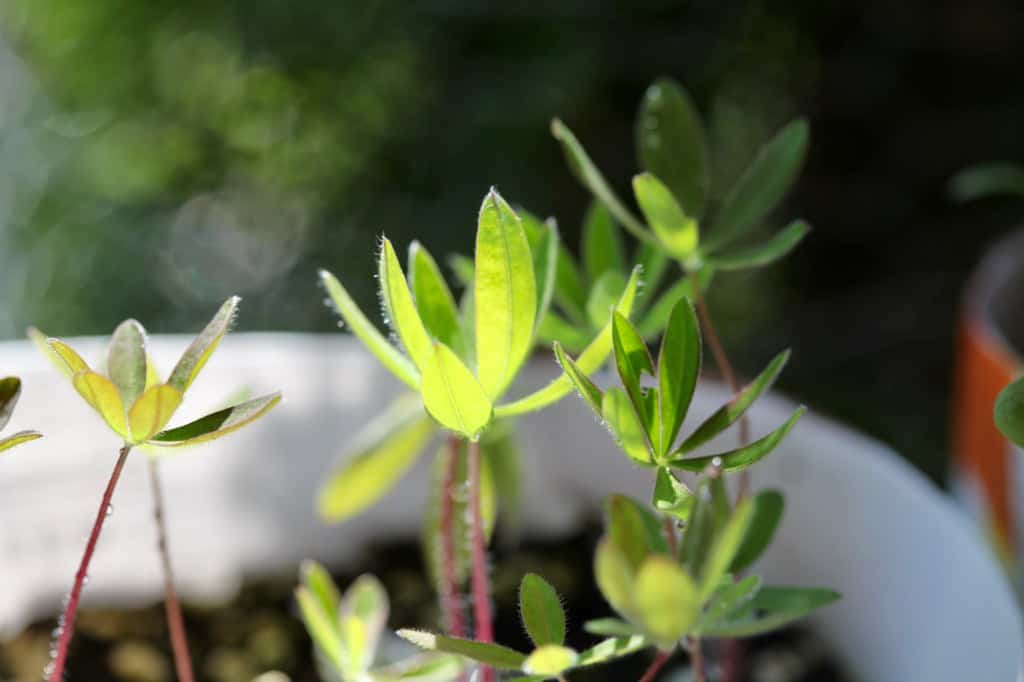
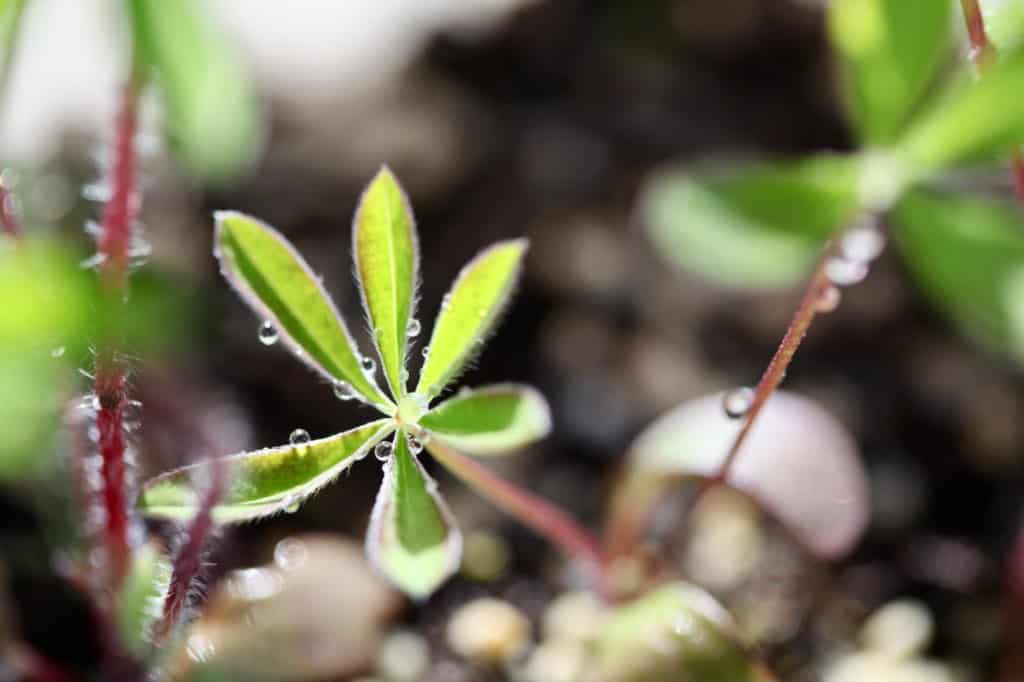
Soaking Lupine Seeds
- Soaking lupine seeds for twenty four hours can help to break down the hard seed coat of the lupine seeds.
- Soak seeds in a bowl of warm water for twenty four hours.
- You can also scarify the seeds prior to soaking which may increase the success of germination.
- Seeds can then be planted directly into the soil following soaking.
- I have also had great success without soaking lupine seeds, and by just giving them a cold moist chill in the fridge with some vermiculite for a couple of weeks.
Starting Lupine Seeds Indoors
We used the method of stratification to prepare our lupine seeds for planting.
- The seeds had excellent germination using this method.
- Our seeds were placed in a baggie with moistened vermiculite, then placed in the fridge for a period of two weeks.
- When the seeds were removed from the fridge some had already started to sprout.
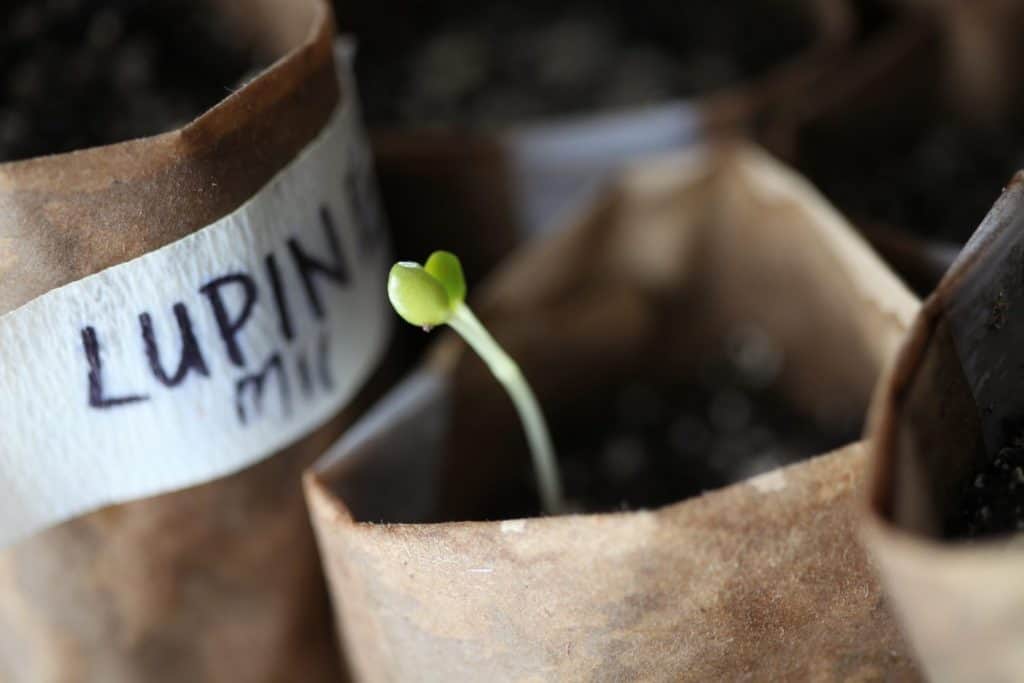
Planting Lupine Seeds Indoors
- To plant lupine seeds indoors, start the seeds 6 to 8 weeks before your last spring frost date.
- We planted some of our seeds in trays, and some in paper pots.
- You can also plant lupine seeds into peat or coir pots that can be placed directly into the ground in spring, to minimize disturbance of the tap root.
- Use a good seed starting mix for planting lupine seeds.
- Sow seeds ⅛ of an inch deep, and cover with the planting medium.
- We placed our seedling tray and paper pots on a heat mat for about a week.
- When sixty percent of the seedlings had germinated, the trays were placed under grow lights.
- The seedlings will remain under the grow lights until they are ready to be hardened off in spring.
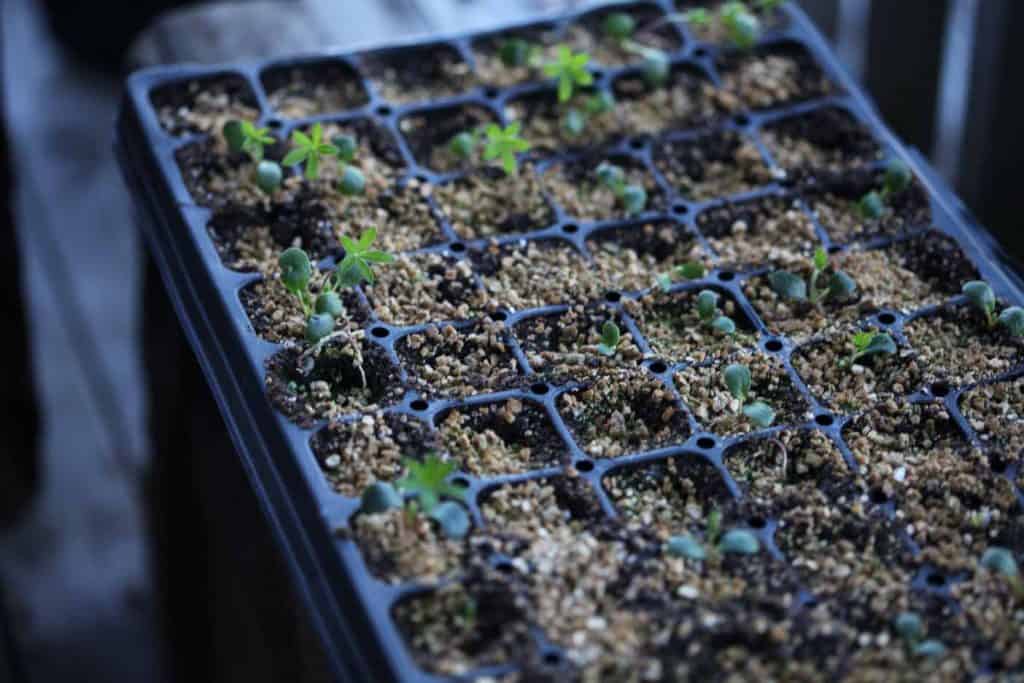
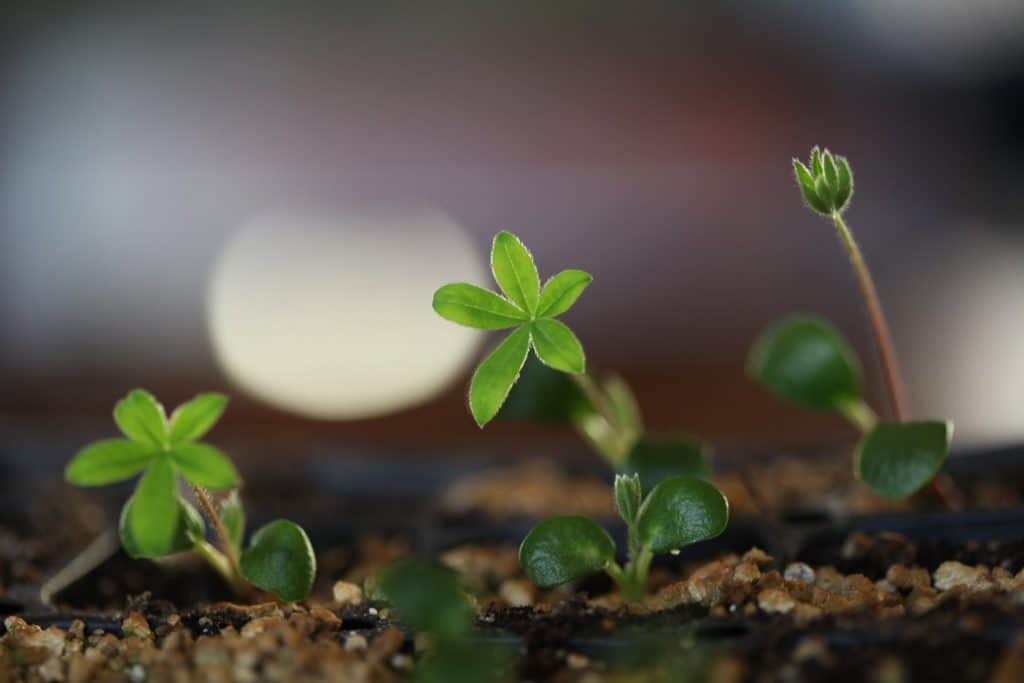
- Be careful of the growing taproots in the seedling trays, and plant out whenever you are able, after the risk of frost has passed.
Planting The Seedlings Into The Garden
- Although lupines are hardy perennials, if they have been started inside, they will still be tender young seedlings before hardening off.
- It is important therefore to give the lupine seedlings the same care as you would any other tender plants, until they have been acclimatized to the outdoor environment.
- Plant the seedlings out after the risk of frost has passed. Know your USDA plant hardiness zone and last frost date, to determine time to transplant.
- Remember to take great care not to disturb the taproots when transplanting the seedlings.
- Plant 18 inches apart to accommodate size at maturity.
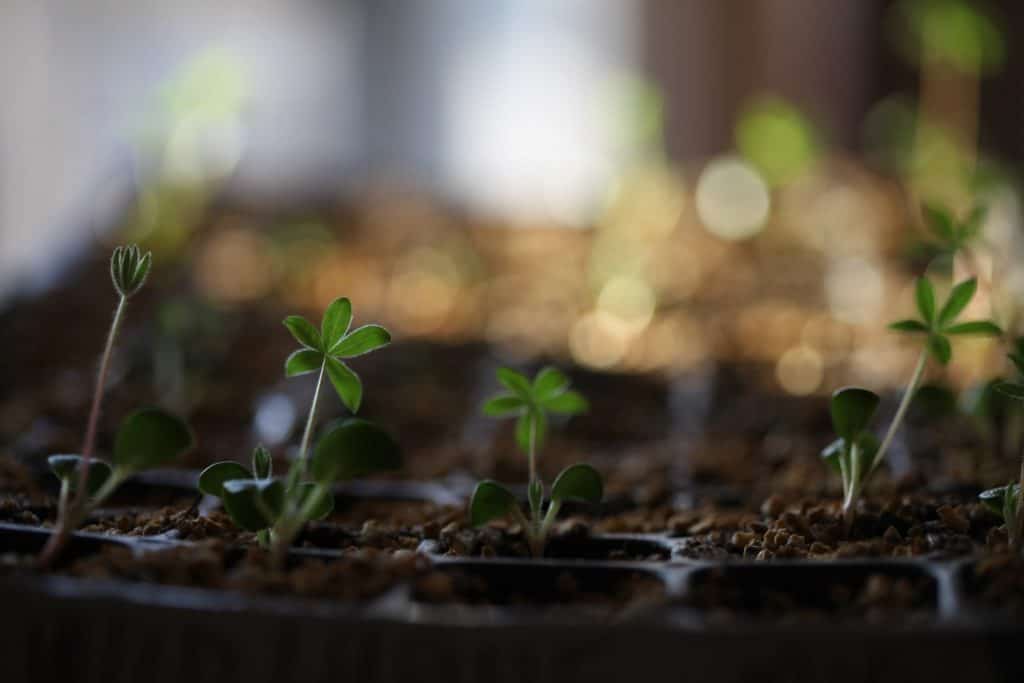
Lupine Care
Growing Zone
- Lupines grow well in USDA growing zones 4 to 8.
Light Requirements
- Lupines like a sunny location, so grow in full sun for best results.
- Lupine flowers will also grow in partial shade, however are more at risk to powdery mildew in a shadier location, and also will not bloom as well in the shade.
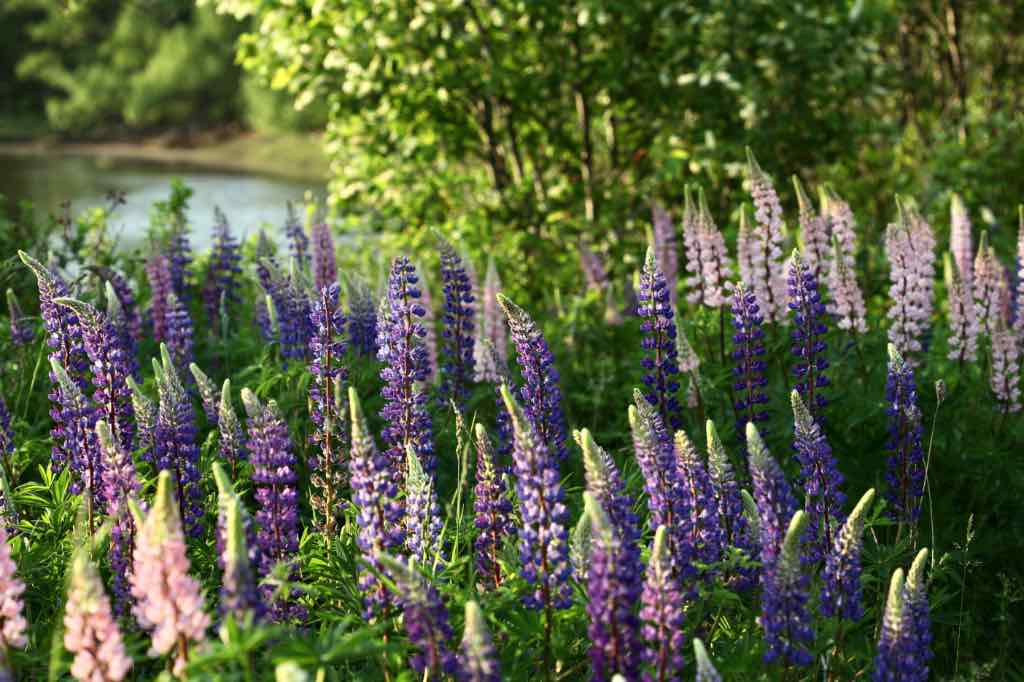
Soil Requirements
- Lupines like average fertility and a well drained soil.
- They can easily grow in gravel and ditches along roadsides and highways, demonstrating that they do not prefer a highly fertile and rich soil, and that they can do very well in poor to average soils.
- Lupines will also grow in heavy soils such as clay soils, as long as there is good drainage to prevent root rot.
Moisture Requirements
- Water well after planting, and keep the newly planted seedlings moist while establishing.
- Lupines are drought tolerant once established in the garden, and will do well with moisture from the natural elements.
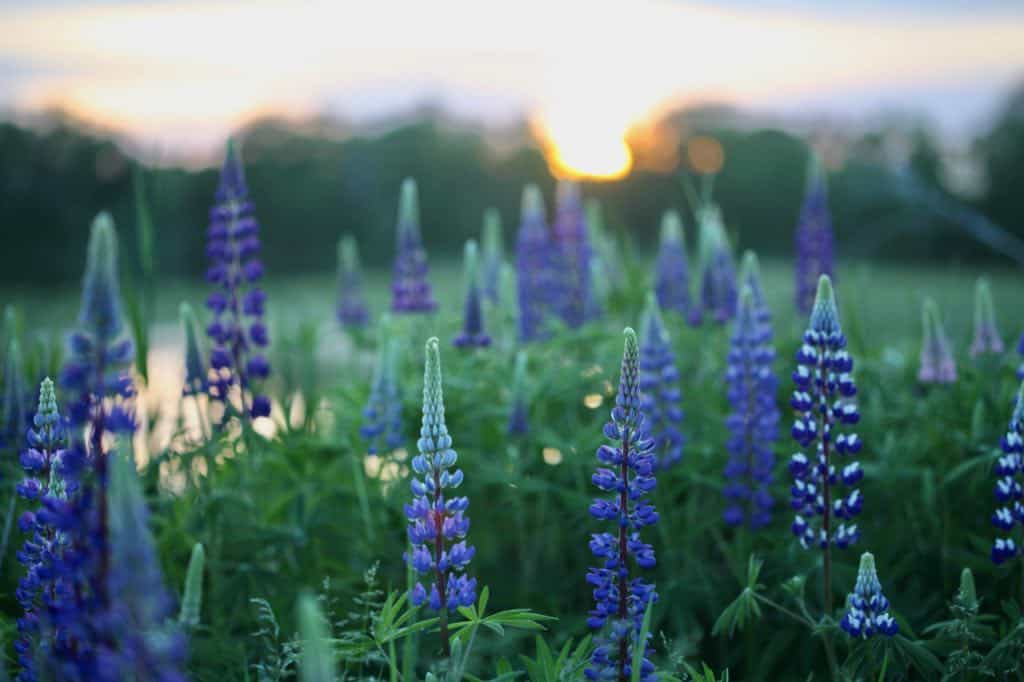
Pests And Disease
- Common garden pests such as aphids and slugs are attracted to lupines.
- As well, these plants have a tendency to develop powdery mildew in warm and humid environments.
Pruning
Deadheading
- Pruning or deadheading spent lupine flowers will add to a neater look after blooming, and can encourage a second flush of blooms.
- Deadheading will also prevent seed pod formation, and therefore self seeding of the plants in the garden.
- Deadheading leaves that are damaged or have powdery mildew will also help to clean up the plant.
Do You Cut Back Lupines In Autumn?
- Cutting back lupines in autumn is not necessary, unless it is a task that you normally do to clean up your garden debris.
- The lupine plant will die back naturally into the ground when it gets cold, and will remain dormant until the following spring when it will put up new shoots.
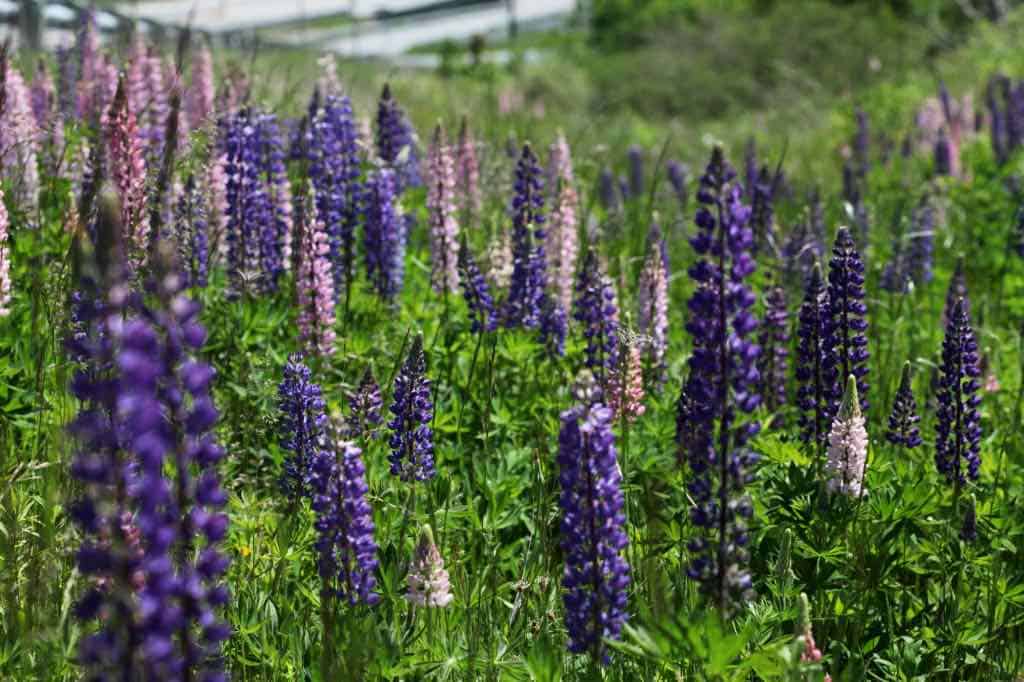
When Do Lupines Bloom?
Lupine flowers bloom in Nova Scotia towards the end of June. There's usually a huge flush of flowers for several weeks.
If you are growing lupines in your garden, you can deadhead the spent lupine blooms for a second flush of flowers towards the end of summer.
New seedlings may not bloom in the first year that they are planted. During this time the plant's energy is directed towards developing a good root system.
That being said, we did get some blooms at the end of the summer on new plantings.
You should get blooms the following year, in the second year of growth, and the plants will continue to grow and mature for several years.
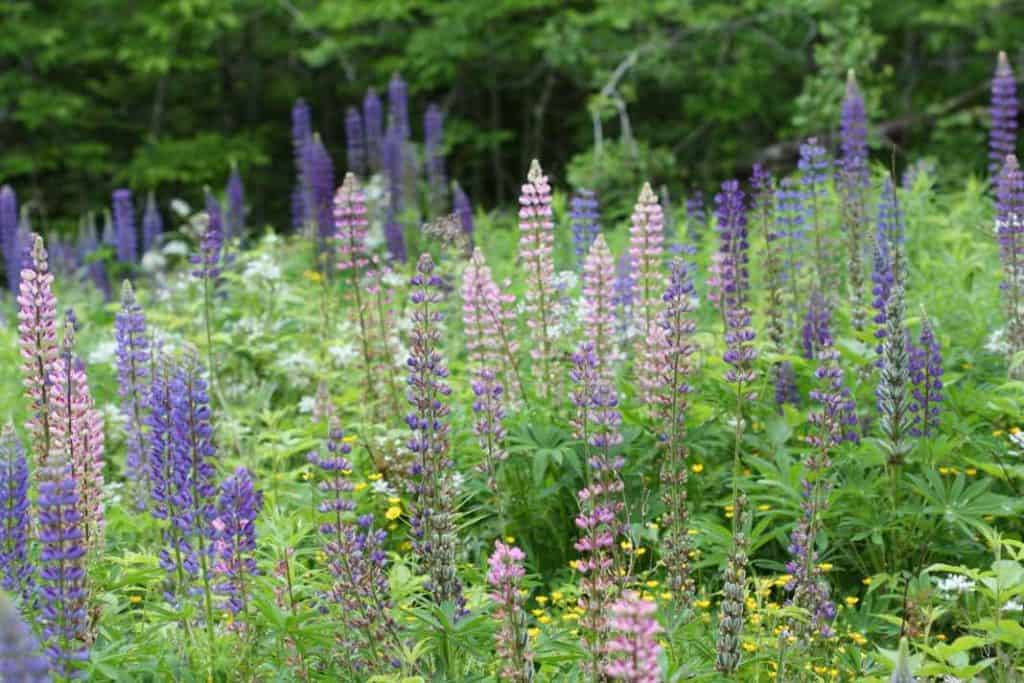
Do Lupines Spread?
Lupines will spread if left to self-seed.
Ripe lupine seed pods will explode their contents of ripe seeds some distance from the mother plant.
If you are planning to harvest your own lupine seeds, make sure that you catch the pods before they ripen and release the seeds.
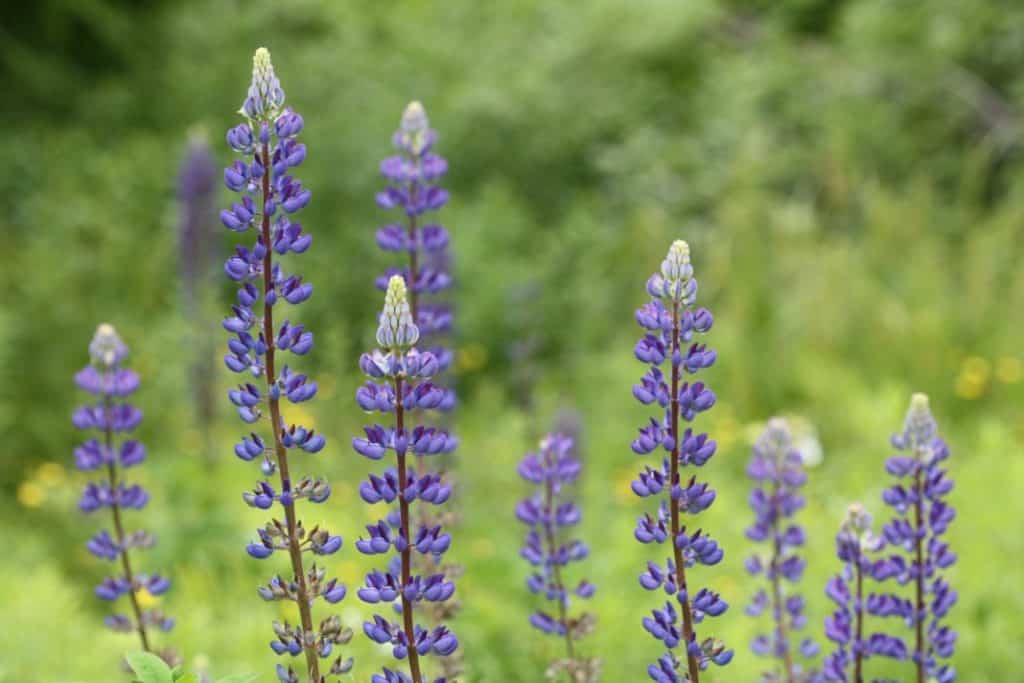
How To Find Wild Lupine Seeds
I went foraging for wild lupine seeds this fall along a country roadside.
Almost all of the lupine seeds had already been dispersed from the pods.
I know now to get there a little earlier next season, most likely in late summer rather than fall. Some seed savers collect the seed pods from the plant before they are fully dried out and allow them to dry indoors. This will prevent seed loss.
We ended up buying our wild lupine seeds this year.
Most have now germinated and are growing nicely under grow lights.
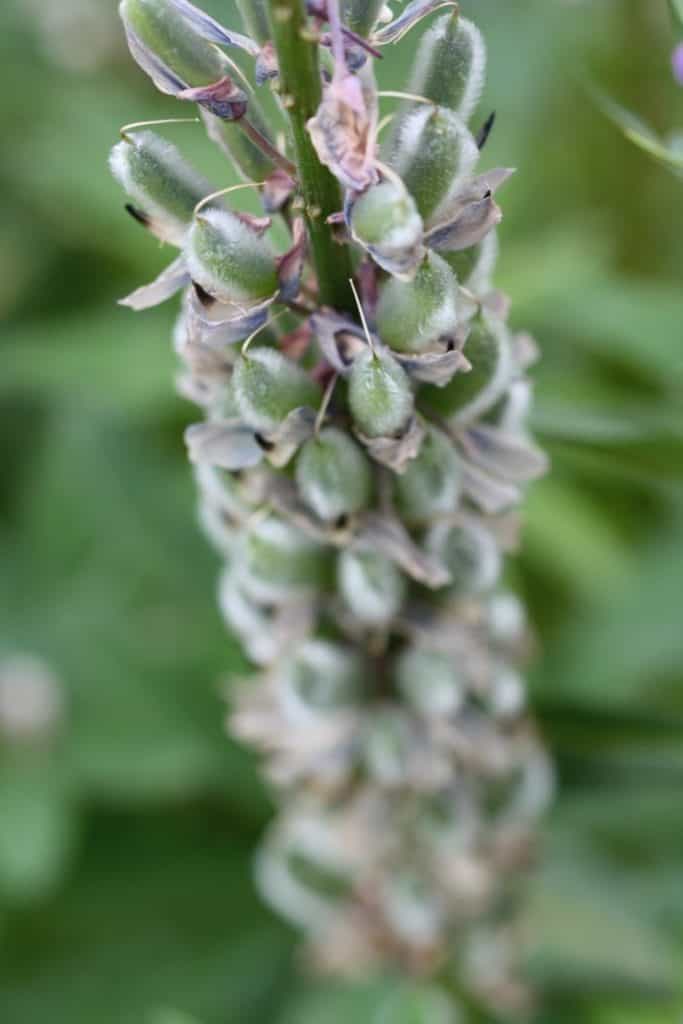
Are Lupines Deer Resistant?
Lupines are known to be deer resistant, and we are quite pleased about that!
Of course keep in mind, that even deer resistant plants can be eaten be hungry deer once in a while, if food is limited.
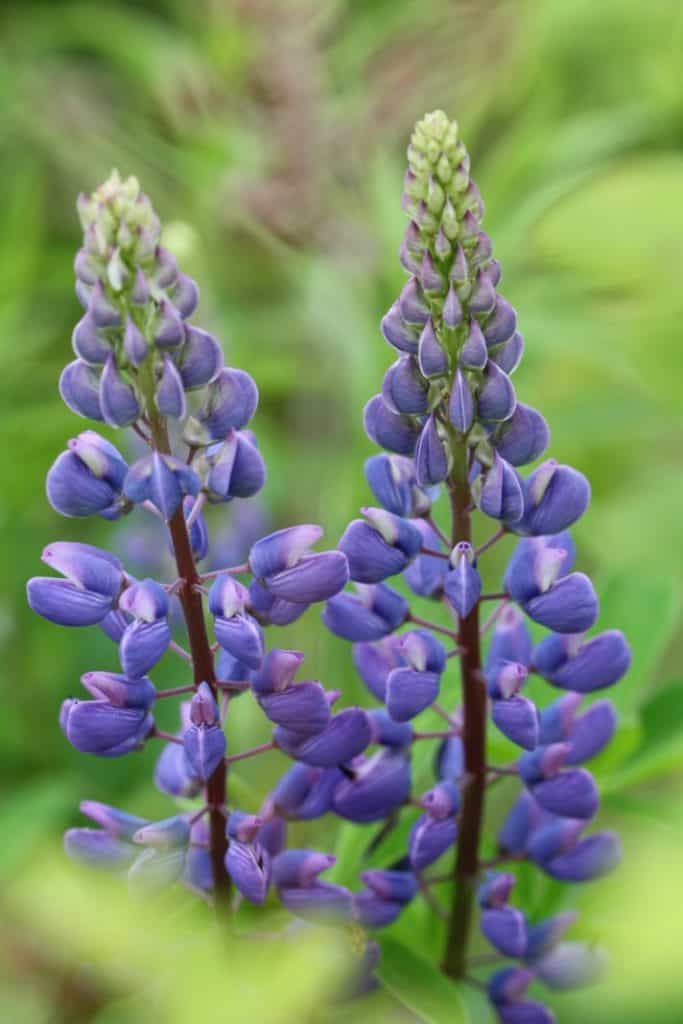
How To Take Care Of Lupine Flowers- Cut Flowers
Lupines are on the list of popular herbaceous perennials that make great cut flowers, and are a good choice for the cutting garden.
Lupines are perfect cottage style flowers and look wonderful in bouquets.
Cut lupine flowers before all flowers have opened on the stem for a longer vase life.
The flowers should be cut in the morning, and make sure that you place the flowers in cold water immediately after cutting.
Allow the flowers to rehydrate in the water. They will also benefit from conditioning.
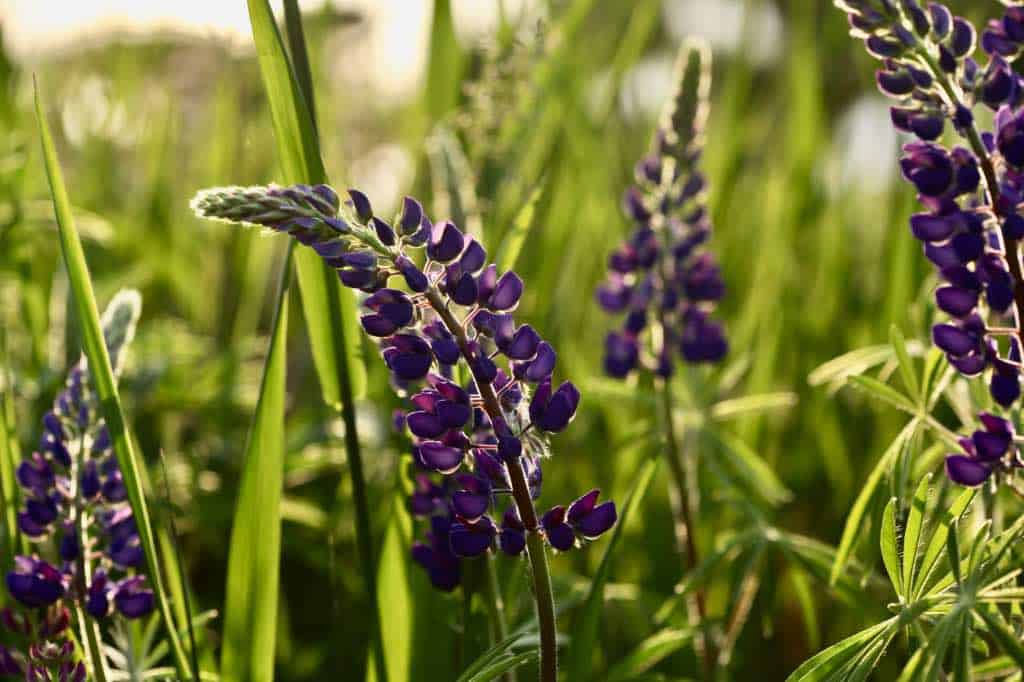
Conclusion
Lupines are colourful and easy care flowers for any garden.
This herbaceous perennial plant is easy to grow, and is a great addition to the garden space.
These flowering perennials offer a wild flower look, and are perfect flowers for cottage gardens.
Collect lupine seeds at the end of the summer, and sow your own seeds wherever you want a burst of color.
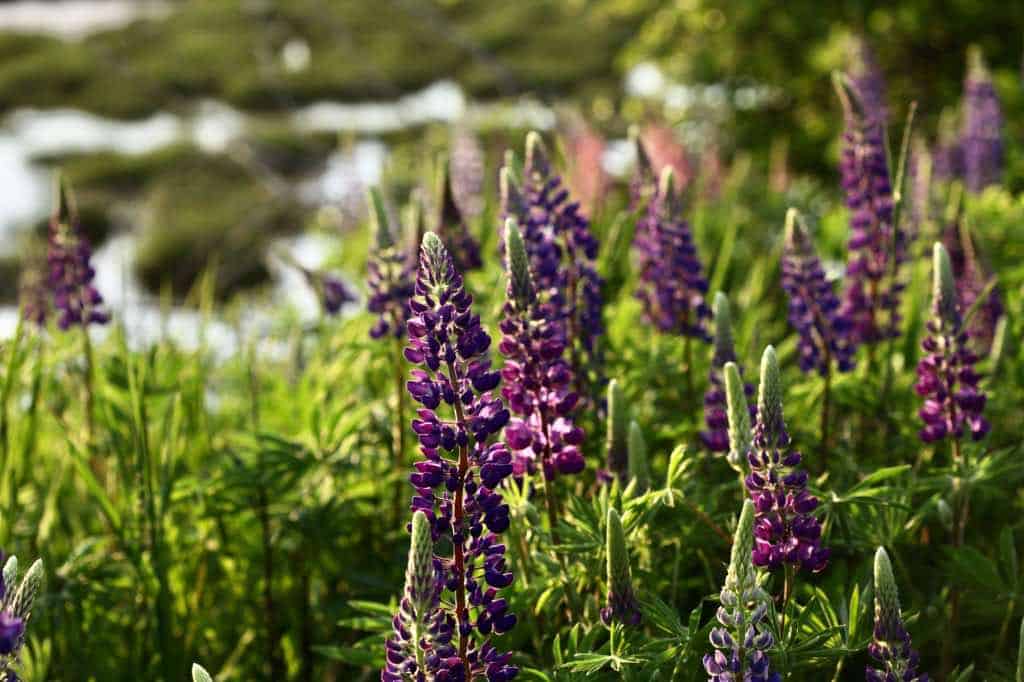
Hope you found this post on how to grow lupines helpful! If you have any questions please leave in the comments below!
Other Posts You May Like:
See the Web Story on Growing Lupines- Planting And Care!
PIN IT FOR LATER!
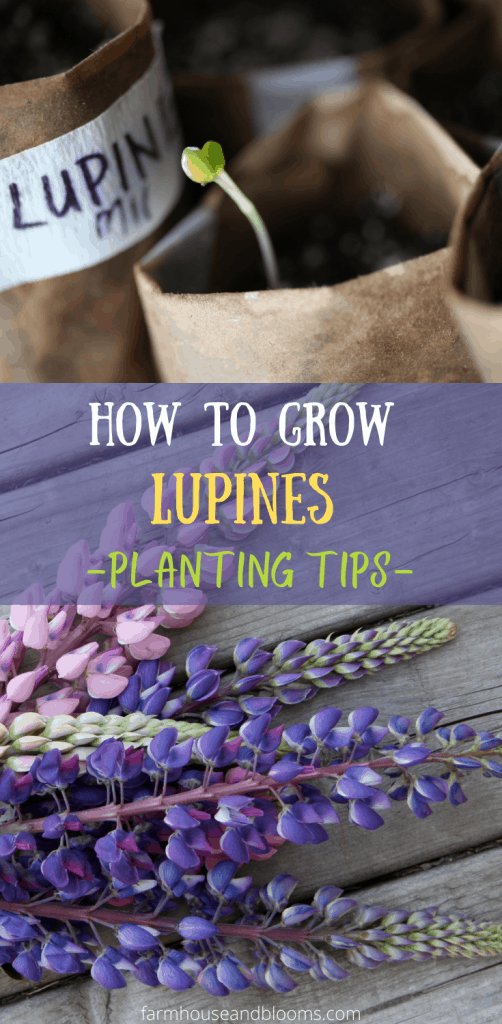
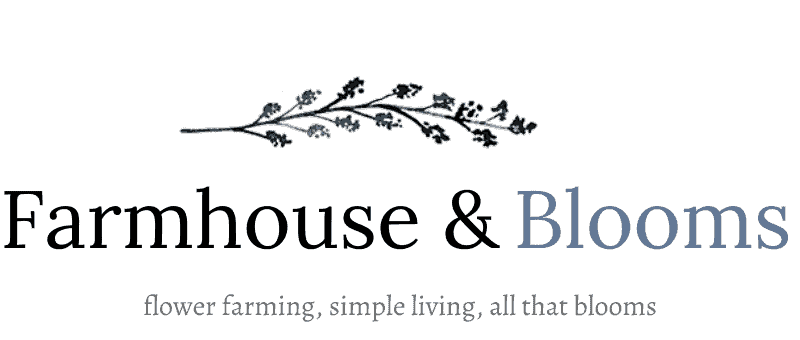

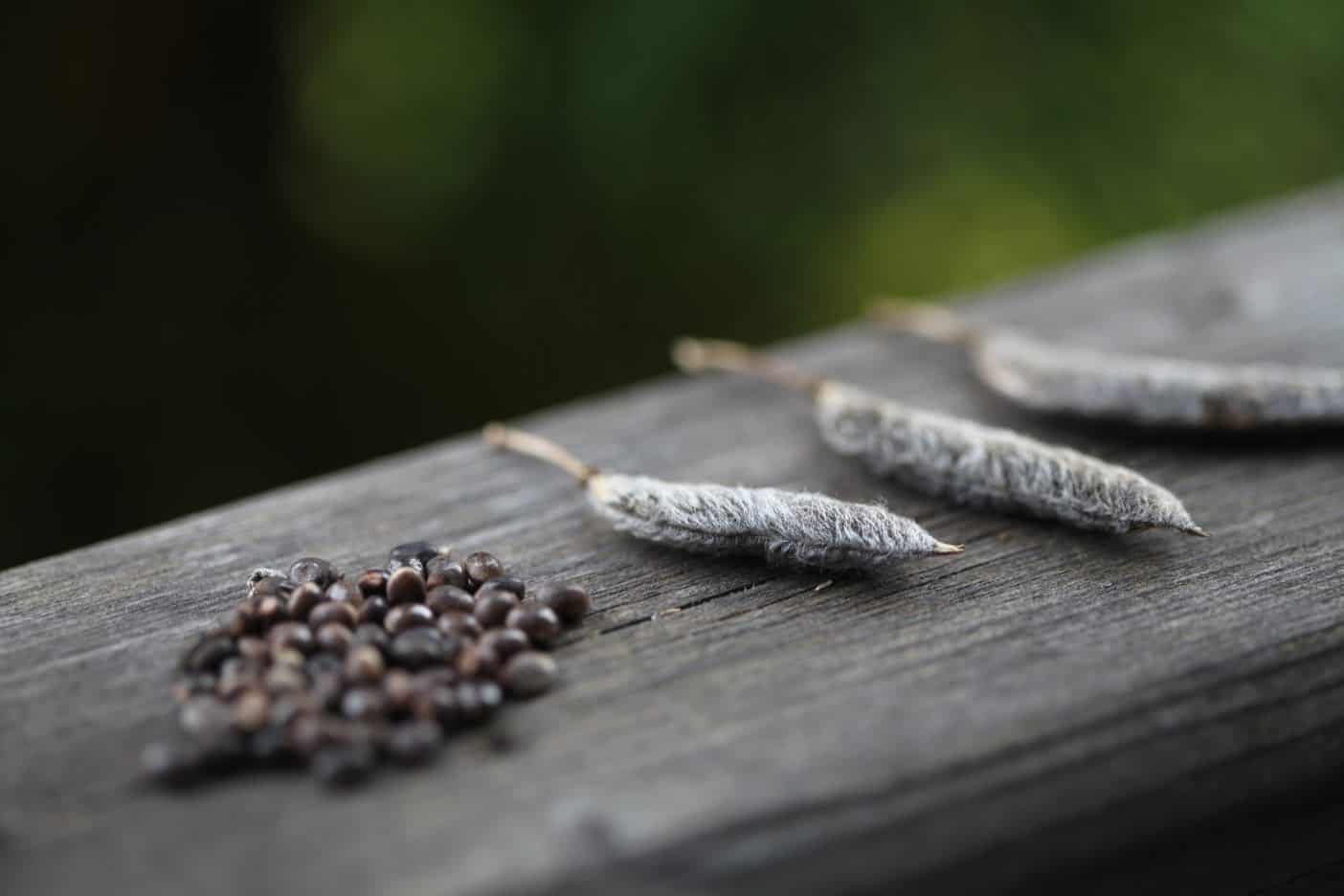
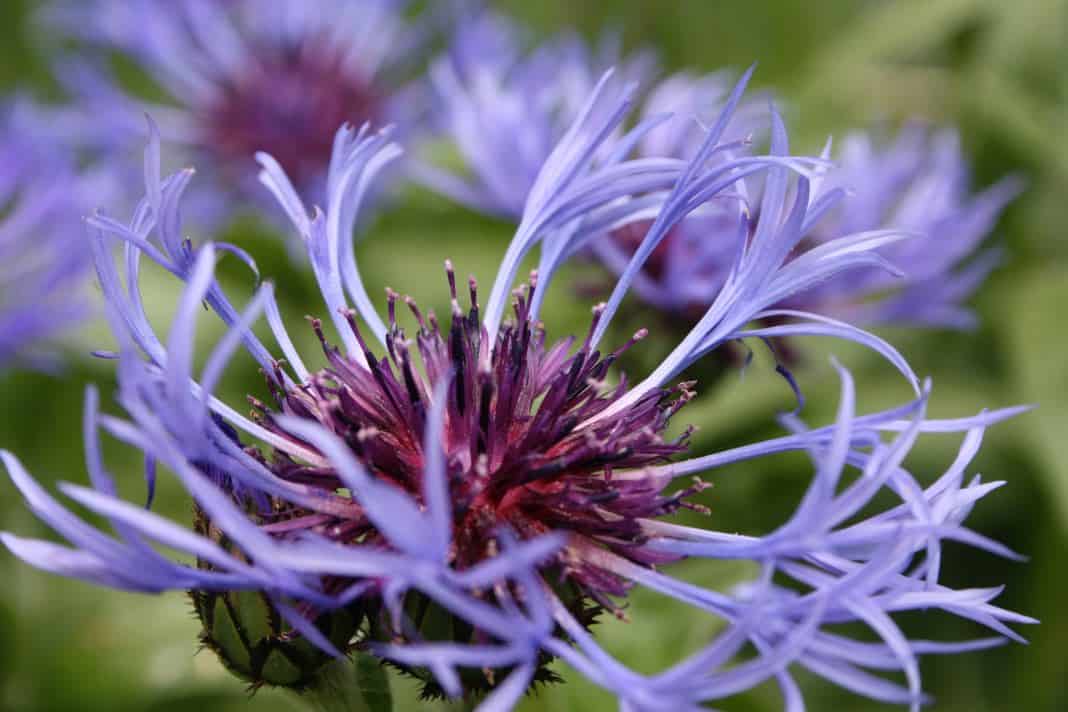
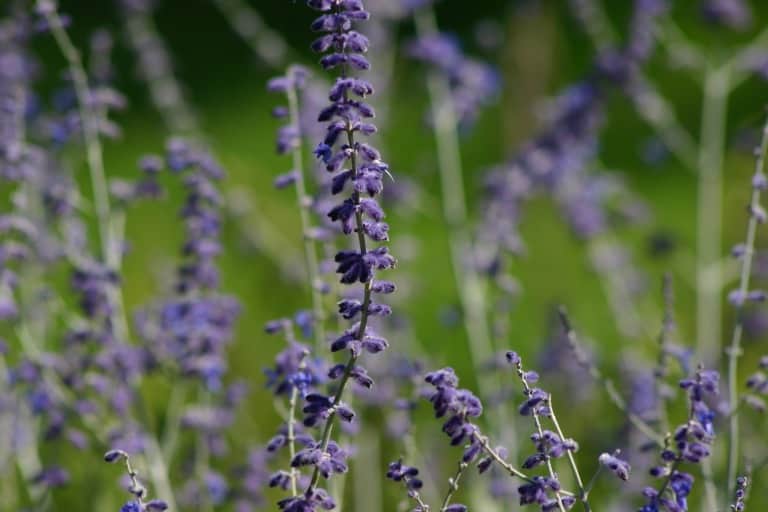
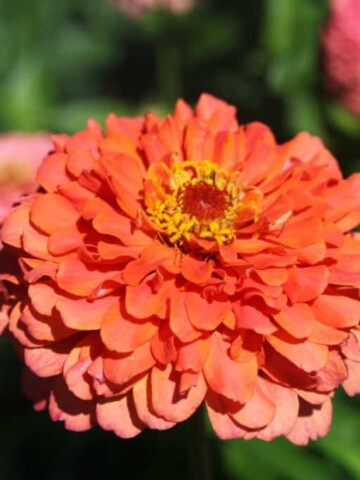
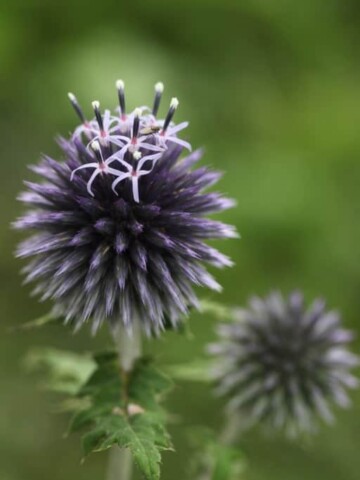
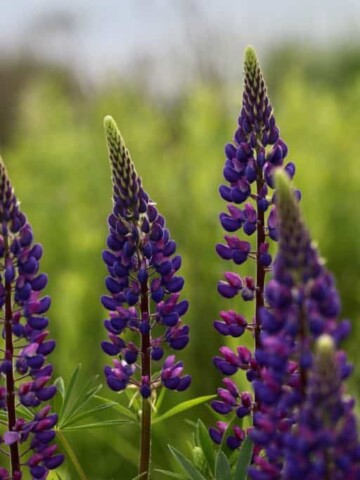
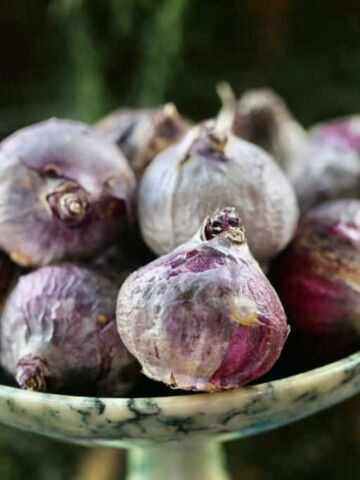
Diane Gail
Lupines line the highway in northern Maine. I've become very fond of them since I moved here. I may have to plant some as I help my son develop his property 😉
cheyanne
They are so beautiful growing along the highway in drifts! I hope that you get a chance to plant some!
Gladys
The are so beautiful! I will have to try growing them from seeds!💕
cheyanne
They are pretty easy to grow! Good luck!
Juliea
These are gorgeous lupines and So much good info here!
cheyanne
Thanks so much Juliea!
Ada
These are beautiful flowers. Great information! Thank you!! 🙂
cheyanne
Thanks so much Ada!
Ann
I was so excited one year when a few of my lupine seeds germinated and grew! Thanks for all the tips!
cheyanne
That's so good to hear! It's always such a great feeling when these seedlings start to grow!